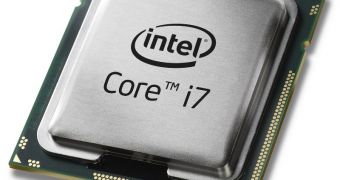While there are still quite a few more months to go until Intel makes official the Sandy Bridge-E processors, the first details describing the performance of these CPUs has already made it online and state that we should expect the chips to be as much as 66 percent faster than the current Core i7 2600.
The Sandy Bridge-E processors, together with the P79 Express chipset, compose Intel's Waimea Bay platform that is expected to launch in the fourth quarter of this year.
Intel will initially release just three processors based on this architecture, two six-core and one quad-core model.
The most powerful chip of the trio will operate at 3.3GHz, packs six processing cores and 15MB of Level 3 cache memory, supports Intel's Hyper-Threading technology and has a fully unlocked BLCK and multiplier.
Just like the above-mentioned Extreme Edition CPU, the second Sandy Bridge-E processor also features six x86 cores (12 threads), and a fully overclocking unlocked design, but its operating frequency has been lowered to 3.2GHz while the L3 cache is also limited to 12MB.
The last of the three processors will pack just four computing cores (8 threads), has limited overclocking potential and features 10MB of Level 3 cache and a 3.6GHz base clock.
All of these will sport an integrated quad-channel memory controller, a built-in PCI Express controller with 40 PCIe lanes and can reach up to 3.9GHz in Turbo Boost mode.
In comparison, the Core i7 2600 features four processing cores with HT support clocked at 3.4GHz, 8MB of Level 3 cache and a dual-channel integrated memory controller.
According to Sweclockers, most of the performance increase brought by Sandy Bridge-E is probably due to the higher core count and also to the increased memory bandwidth available to the chip.
It is a well-known fact that some applications, such as video encoding and graphics rendering can scale almost 50% in performance when going from a quad-core to a hexa-core processor.

 14 DAY TRIAL //
14 DAY TRIAL //